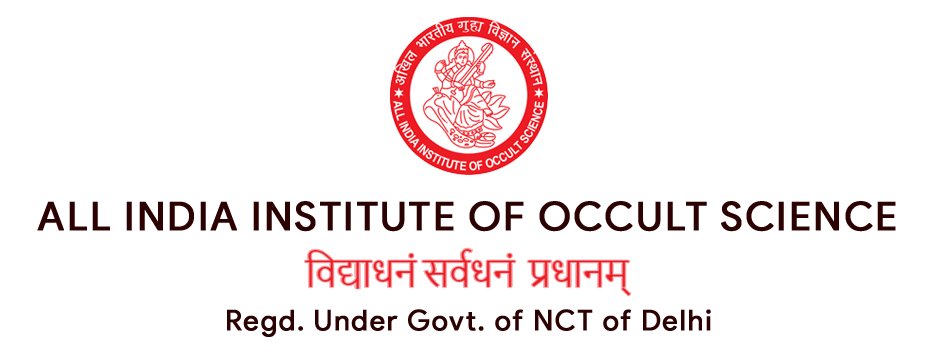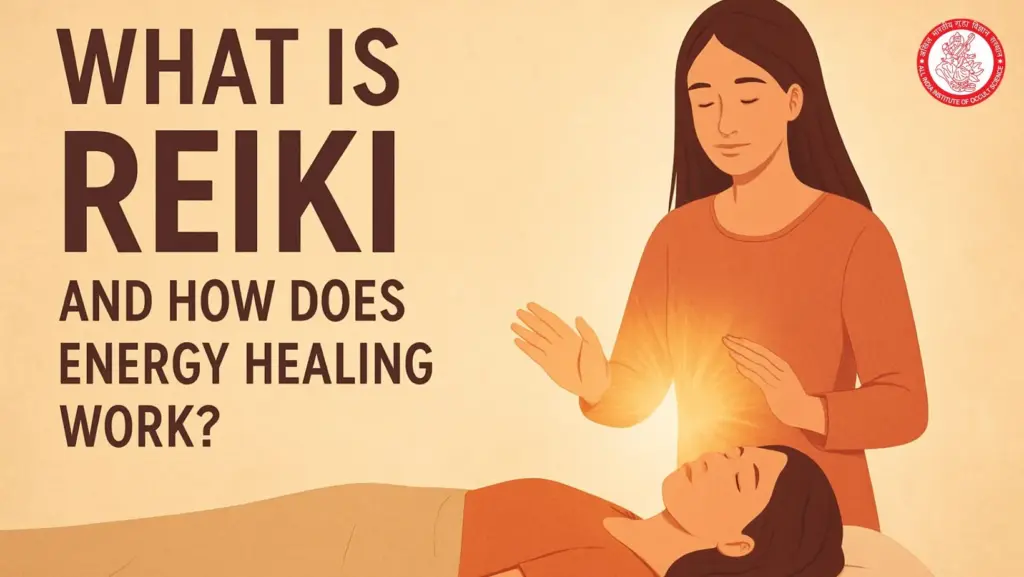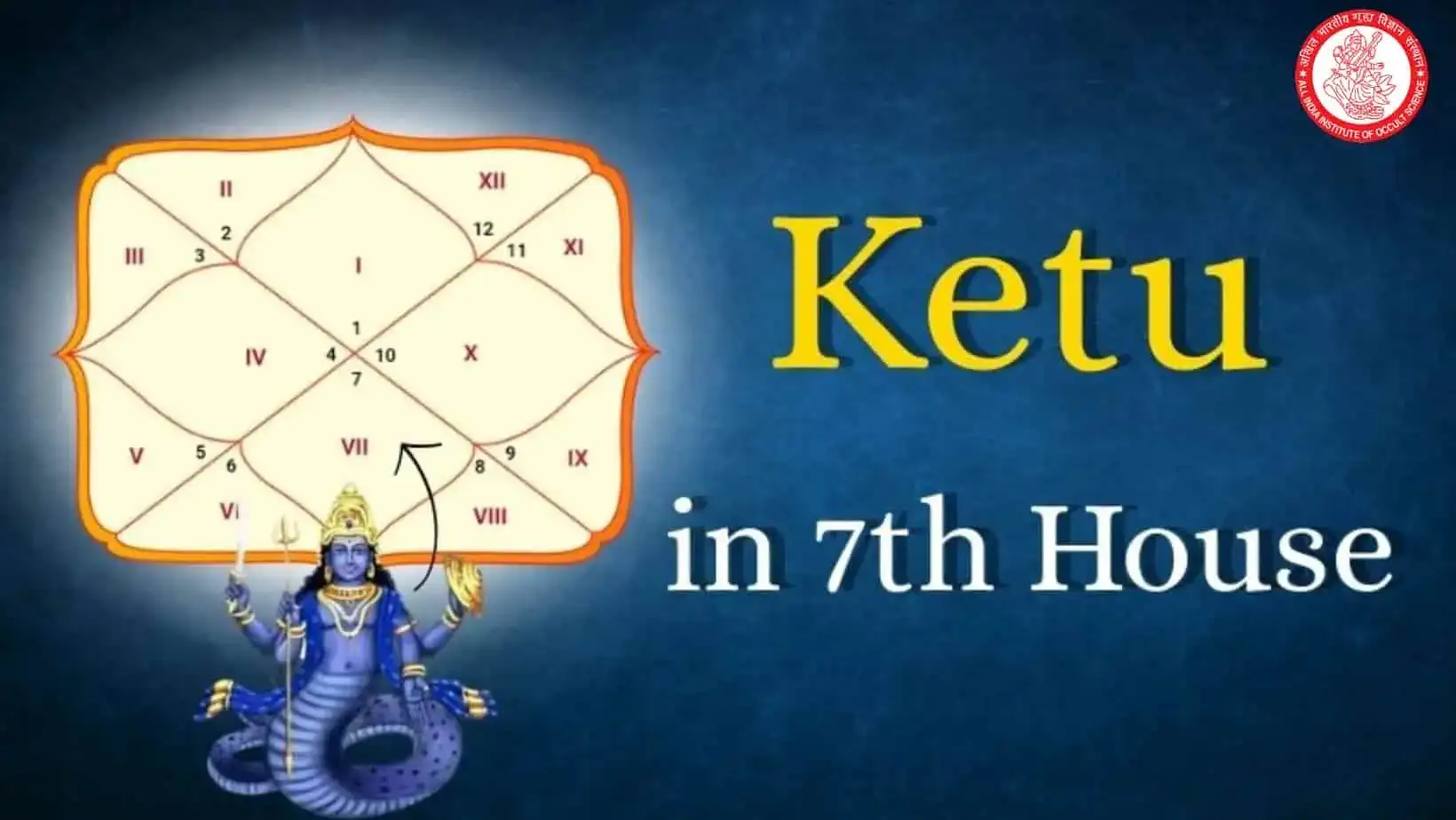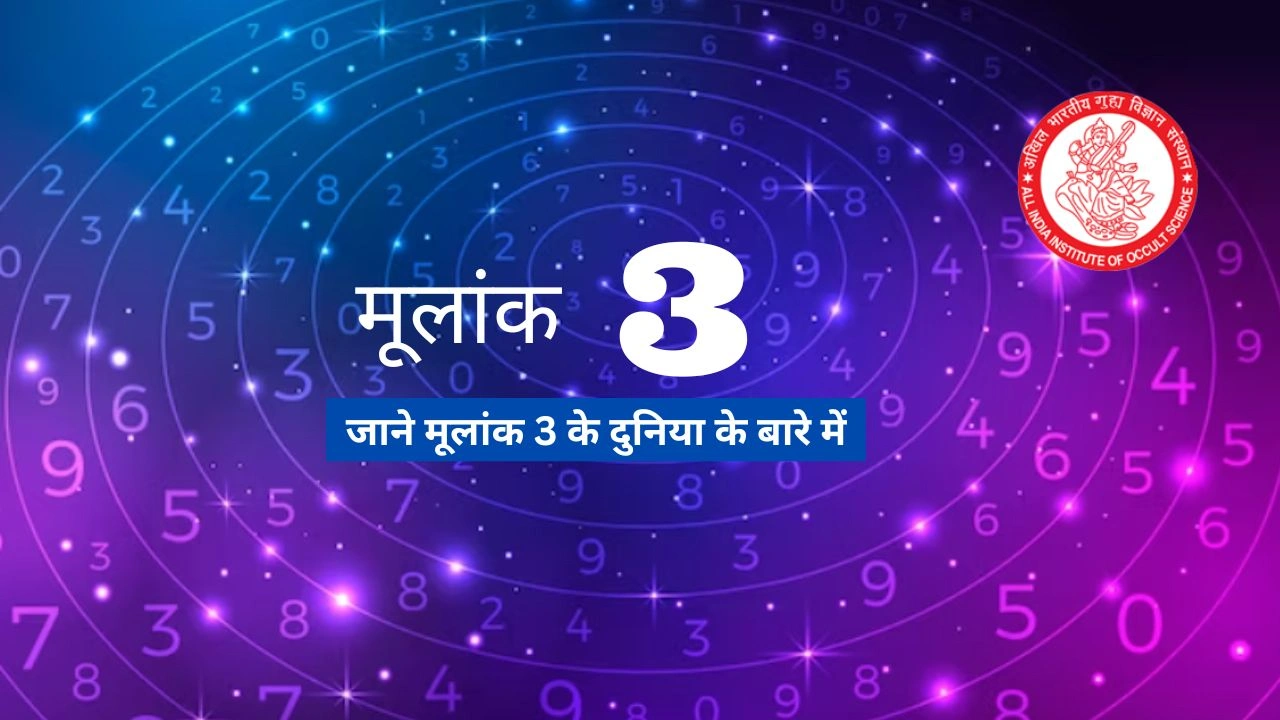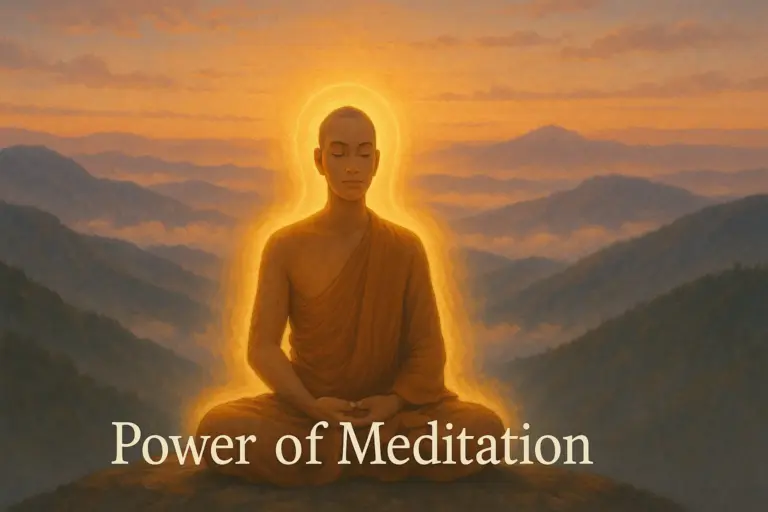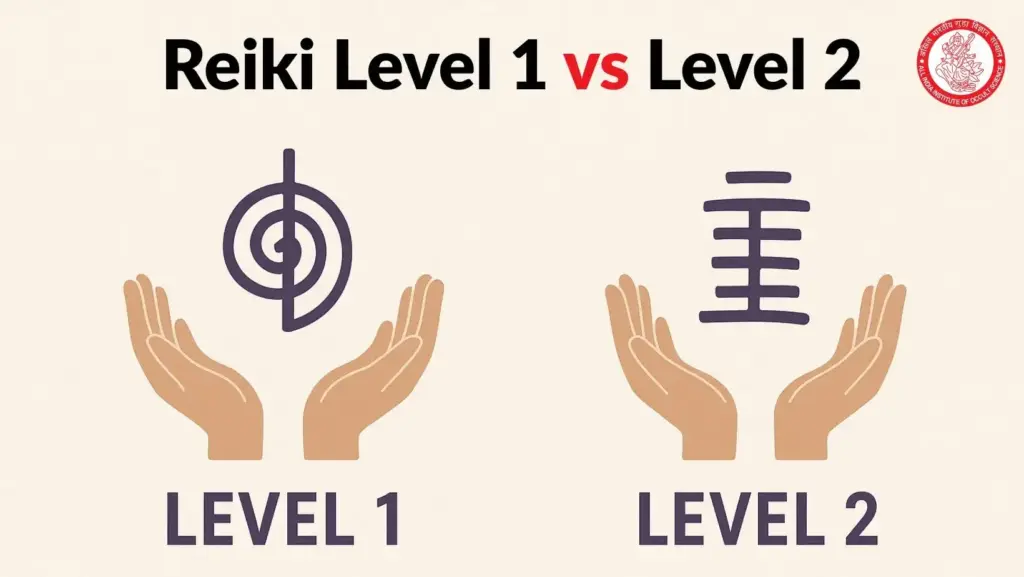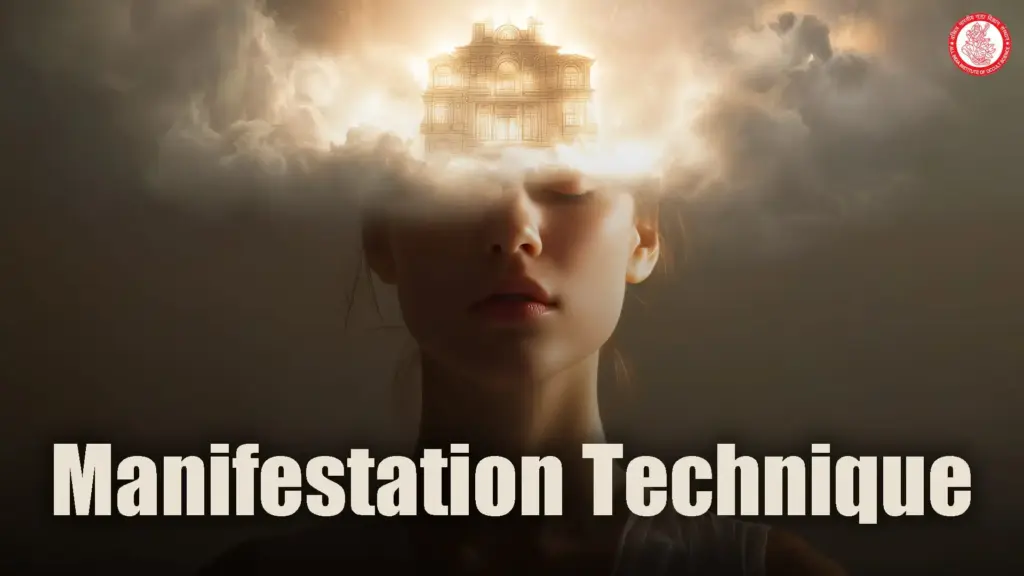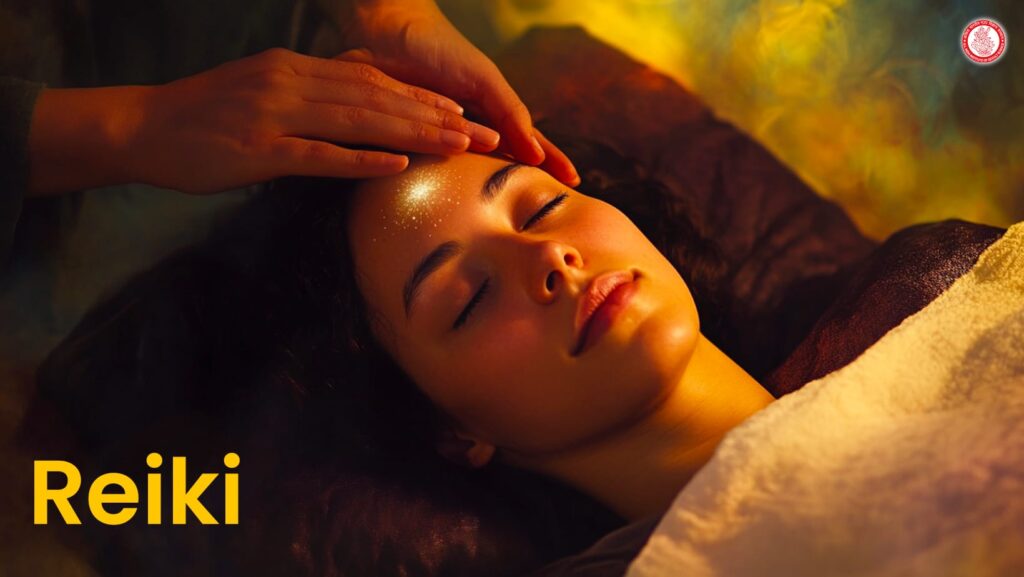Have you ever felt better just because someone gave you a hug or a gentle touch? Reiki is a bit like that, but instead of hugs, it uses energy. Reiki is a healing practice that helps your body and mind relax.
It also lowers your stress, heals your inner energy and makes you feel positive. It works as magic, as it is about the way energy flows. Read this full blog to know what Reiki is, how it works, its benefits and more.
What is Reiki?
Reiki is an energy healing technique which was first introduced in Japan. The word comes from two Japanese words: “Rei”, which means “universal,” and “Ki”, which means “life energy.” The full word, reiki, means “universal life energy.” It is believed that everyone goes through this energy. If it flows well, you feel healthy and balanced.
How Does Energy Healing Work?
Imagine your body as a video game character with an energy bar. If your energy bar is full, you feel strong and happy. But stress, sadness, or sickness can lower it. Reiki helps restore and balance your energy bar. Reiki experts use their hands to guide energy into your body, which helps you feel calmer and stronger.
Health Benefits of Reiki
If you try this practice, you will get to see many health benefits of Reiki:
- You will feel relaxed
- It will be able to lower stress and anxiety
- It helps you sleep better
- It eases your pain or discomfort
- It makes you feel happier and more balanced
Reiki is not a replacement for medical care, but it can be a great support.
Also Read: How Distance Healing reiki Can Improve Your Life
What Happens in a Reiki Session?
Setting and Environment: Reiki usually takes place in a calm, quiet room. Soft music may play, and the lights are dim. The goal is to make you feel safe and peaceful.
Practitioner’s Role: The practitioner (the person giving Reiki) is like a guide for the energy. They don’t force healing. They help your energy move more smoothly.
Hand Positions and Energy Flow
- You will lie fully clothed on a table or sit in a comfy chair.
- The practitioner places their hands lightly on or just above your body, on spots like your head, shoulders, stomach, or legs.
- They keep their hands there for about three minutes.
- If you have an injury, like a burn, they may hover their hands just above it.
Duration of a Session: Most Reiki sessions last between 45 minutes and an hour and a half. It depends on your needs and goals.
Use of Crystals and Chakra Healing Tools: Some practitioners use crystals or chakra wands. These tools are thought to help guide energy or protect against negative vibes.
Number and Frequency of Sessions
Some people feel better after just one session. Others choose several sessions to work on deeper issues. It’s different for everyone.
Different Methods of Reiki
Practitioners use different techniques, such as:
- Centring: Helps both practitioner and client feel calm before starting.
- Clearing: Removes stuck or heavy energy.
- Beaming: Sending energy without direct touch, often from a distance.
- Extracting Harmful Energies: Pulling out negative energy that doesn’t belong.
- Infusing: Adding positive energy.
- Smoothing and Raking the Aura: Sweeping off invisible dust to keep your energy clear.
Connection with Therapeutic Touch Massage
Reiki is different from massage, but both help you relax. Massage works on muscles, Reiki works on energy.
Risks and Considerations
Potential Risks of Reiki
Reiki is gentle and safe. There’s no physical harm. The only real risk is if someone uses Reiki instead of medical care for serious health problems. That’s not safe.
Importance of Complementary Use with Medical Treatments
Reiki should be done along with medical treatments, instead of being used as a replacement. For example, someone going through surgery or cancer care might use Reiki to feel calmer and more supported.
Consulting with Healthcare Providers
If you want to try Reiki, talk to your doctor first. They can help you see how Reiki might fit into your overall care plan.
Also Read: How to Know if Someone is Doing Reiki on You
Origins and History of Reiki
Roots of Reiki in Japan
In the early 1900s, Mikao Usui, a Buddhist priest, started Reiki in Japan.
Mikao Usui and the Development of Usui Reiki
Usui went on a 21-day fast and meditation on Mount Kurama in Japan. During this time, he felt a burst of healing energy. After this, he began teaching Reiki, which became known as Usui Reiki.
Spread of Reiki to the United States and Beyond
During the 1930s, Hawayo Takata introduced Reiki from Japan to Hawaii. From there, it spread to the rest of the United States and later, worldwide.
Reiki in Modern Healthcare Settings
In today’s times, many hospitals and clinics use Reiki techniques. Doctors and nurses sometimes use it to help patients feel calm before surgery or during tough treatments.
The Reiki Principles
Reiki isn’t only about energy healing. It also teaches five simple principles for daily life.
Overview of the Five Principles
- Just for today, I release angry thoughts
- Just for today, I release thoughts of worry
- Just for today, I’m grateful
- Just for today, I expand my awareness
- Just for today, I’m gentle with all beings
Just for Today, I Release Angry Thoughts
Anger makes us feel heavy. This principle reminds us to let go of anger instead of holding on to it.
Just for Today, I Release Thoughts of Worry
Worry is like carrying a heavy backpack of “what ifs.” Reiki teaches us to set it down and live in the present.
Just for Today, I’m Grateful
Gratitude makes us stronger. Being thankful, even for small things, creates positive energy.
Just for Today, I Expand My Awareness
This is about mindfulness. Paying attention to the present moment makes life calmer and more meaningful.
Just for Today, I’m Gentle with All Beings
Kindness matters. Being gentle with others and with ourselves creates more positive energy in the world.
Applying Reiki Principles in Daily Life
Here’s how you can use these principles every day:
- Take deep breaths and let go of anger.
- Release worries by focusing on the now.
- Say thank you often.
- Notice small details and enjoy them.
- Practice kindness and compassion daily.
Should You Try Reiki?
Suitability for Different Individuals: Reiki is gentle and safe for almost anyone, kids, adults, and elderly people.
Personal Growth and Spiritual Balance: Even if you’re not sick, Reiki can help you feel more balanced, peaceful, and connected with yourself.
Complementary Role in Health and Well-Being: Reiki works best when combined with medical care. It won’t replace medicine, but it can help your body and mind during healing.
Reiki is about energy, relaxation, and balance. It’s a gentle way to support your health, lower stress, and grow spiritually. While it’s not a cure-all, Reiki can be a helpful addition to your overall well-being.
Also Read: heart line palmistry
FAQs:
Q1. How does Reiki actually work?
Ans. Reiki works by a practitioner using their hands to guide healing energy into your body where it’s needed.
Q2. Is Reiki the same as energy healing?
Ans. Yes, Reiki is a type of energy healing that started in Japan.
Q3. What happens during Reiki healing?
Ans. During Reiki, the practitioner lightly places hands on or above you, and you may feel warmth, tingling, or just calm.
Q4. Can I do Reiki on myself?
Ans. Yes, anyone can learn Reiki and use it on themselves, no matter their age or health.
Q5. What happens when you do Reiki every day?
Ans. Doing Reiki daily may help reduce stress, improve sleep, and ease pain.
